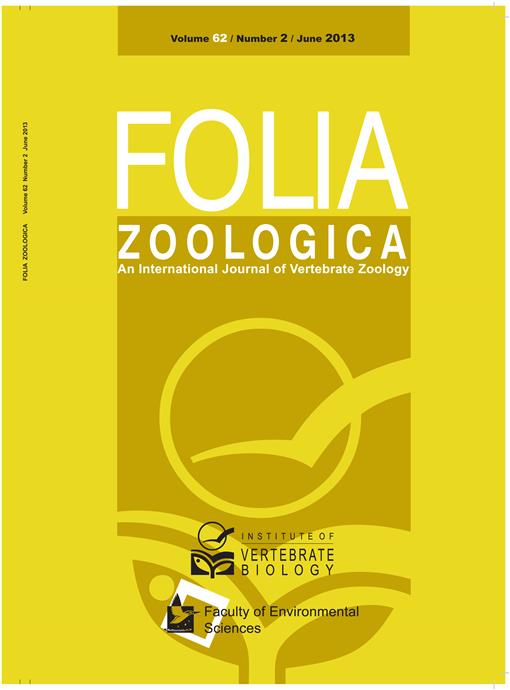Clara Stefen
Folia Zoologica 62 (2), 155-164, (1 June 2013) https://doi.org/10.25225/fozo.v62.i2.a11.2013

KEYWORDS: subspecies C. c. canescens, Thuringia, Saxony-Anhalt, Austria, Belgium, the Netherlands, discriminant analyses
The craniometric variability of skulls of the common hamster (Cricetus cricetus) from different countries (Belgium, the Netherlands, Austria, Germany) and different regions within Germany was studied. The aim was to study the variability in different regions and to see if differences between populations exist now and might have existed in former times also. The discriminant analyses were performed for females and males separately. The material was assigned to three different age classes and tests were attempted with all age classes. For the largest sample from Saxony-Anhalt, differences could also be observed between the three selected time periods (1900–1930, 1931–1960 and 1961–1990). Discriminant analyses were performed by keeping the sexes, age classes, and time periods separate wherever the material allowed for it. Regional samples differed to some degree (depending on the set of samples used). Particularly the samples from Austria, Belgium, and the Netherlands were more offset from the German samples; nevertheless, some overlap existed for the males of the third time period. The position of the small sample from the Rhineland was ambiguous in the different discriminant analyses but seemed rather to fall within the range of other German samples and not clearly in-between the German and the Dutch/Belgian samples. Overall variability, changes with time, and possible yearly fluctuations, as described in the literature, influenced the results and overlaid existing regional differences. The existence of a western subspecies could not be supported. The lack of substantial numbers of specimens illustrated the importance of collecting even the common species at all times for future research.

